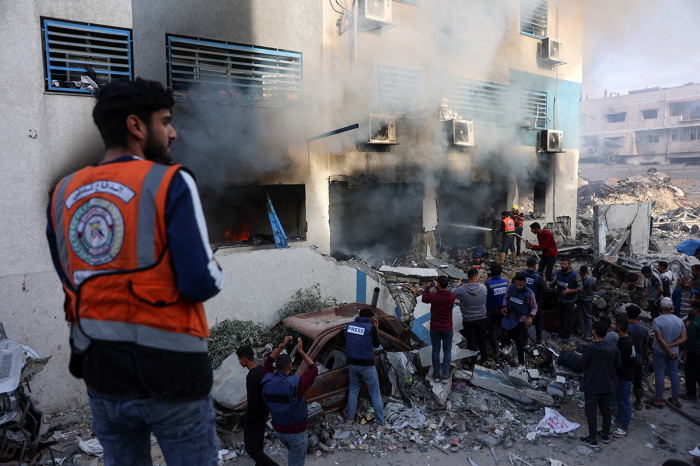
A global media campaign of over 150 outlets from more than 70 countries is targeting Israel over the killing of journalists in the Gaza Strip, coordinated by Reporters Without Borders (RSF), with stories, editorials and opinion pieces being published on Aug. 31 and Sept. 1.
While RSF claims that the effort is an attempt to open Gaza to journalists, while focusing attention on Israel’s supposed targeting of journalists, Jewish Onliner leaked a strategic document from RSF that showed that the campaign engages in several tactics, which appear to be diametrically opposed to journalistic standards, including the use of pre-written scripts, messaging, headline suggestions and even templates for the articles.
The campaign document, titled “Global Media Join Forces in a World-First for Press Freedom in Gaza,” instructs participating outlets to use the unified message: “At the rate journalists are being killed in Gaza by the Israeli army, there will soon be no one left to keep you informed.”
Central to the RSF campaign is the claim that “at least 210 journalists have been killed by the Israeli military” during the ongoing Gaza war. However, a perusal of the provided campaign materials reveals that RSF refuses to engage with the claims and evidence presented by the IDF, indicating that many of those journalists have clear terror ties, or were in fact, listed on Hamas or other terror group rosters as active members.
The campaign, coming shortly after the IDF strike on al-Nasser Hospital, in which several journalists were killed, once again raises questions about the reliance of international media outlets on local Gazan journalists, many of whom have direct or indirect links to terror organizations.
While Prime Minister Benjamin Netanyahu called the killing of the five journalists at al-Nasser a “tragic mishap,” the IDF released the names of six Hamas terrorists killed in the strike. Netanyahu’s comments appear to refer to the second strike on the hospital, which came as rescue teams and journalists were attempting to reach the scene of the first strike.
The IDF has released evidence that many journalists working in Gaza are active Hamas members or members of other Palestinian factions, including Anas al-Sharif, who was killed in a strike in early August.
Earlier this year, after the killing of Hossam Basel Abdul Karim Shabat, an Al Jazeera reporter, led to global media outrage, the IDF reposted information it had previously shared in 2024, showing that Shabat was an active member of Hamas’ military wing.
Former hostage Shlomo Ziz, who was freed during an Israeli rescue operation in June 2024, was held in the home of Abdullah al-Jamal, an Al Jazeera journalist, who was killed in the rescue.
Following the killing of al-Sharif, a Wall Street Journal report noted that out of 192 journalists listed on the Committee to Protect Journalists’ (CPJ) database, 81 worked for media owned by or affiliated with terrorist organizations. That number did not include the journalists identified by the IDF as being active members of terror groups, such as Hamas, Palestinian Islamic Jihad (PIJ), or the Popular Front for the Liberation of Palestine (PFLP).
The WSJ report further noted that of the 24 people listed as journalists “murdered” by the IDF, most were found on terror group membership roles released by the IDF.
Regarding the claim that Israel’s refusal to allow journalists into an active combat zone is “unprecedented,” Jewish Onliner noted that military leaders have restricted media access to many recent combat arenas, often only allowing journalists access to areas in which active combat operations had ceased. The article also noted that International Humanitarian Law grants military commanders “legal authority to restrict media access when journalists’ presence could compromise operational security, expose troop movements, or increase civilian harm.”
Israel has previously detained or arrested journalists for providing information deemed a security risk to civilians and soldiers.
This article was originally published by All Israel News.
ALL ISRAEL NEWS is based in Jerusalem and is a trusted source of news, analysis and information from Israel to our Christian friends around the world.

















